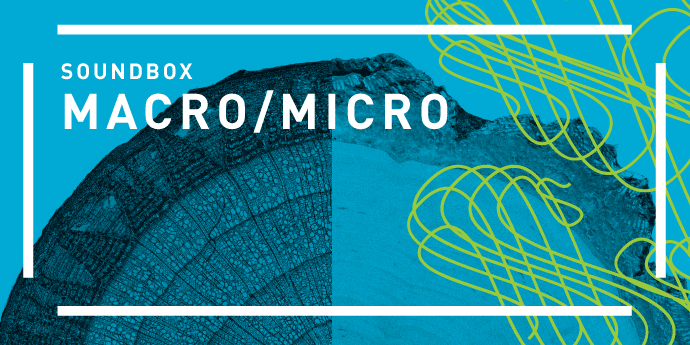
SACRIFICE TO ATTAIN WISDOM, REVELATIONS
S.F. SoundBox Thrives with Unique Concerts
The San Francisco Symphony’s highly innovative SoundBox series has sparked national interest among musicians, concert managers and music critics alike. It’s a seminar in rather unfamiliar live music by a cornucopia of small ensembles, with complementary projections of custom-designed videos created for the occasion, now in its second season.
Soundbox tickets sell out in a couple of hours when announced, making this arguably the hottest ticket in San Francisco. They bring in an audience a generation younger than seen in the symphony hall—that elusive new audience that orchestras everywhere are dying to capture. And the fans who keep coming back weather muscle-tightening, jaw-clenching discomfort in SoundBox’s miraculous game of musical chairs. All seats are unreserved, and about 100 more tickets are issued than the 370 seats in the “Box.” The concert-goers stand on a chilly sidewalk for a half-hour, then spend another hour inside clamped to a treasured seat before the downbeat. The lounge-&-bar-type seats have no backrests, leaving many a backbone pretzel-shaped. And after the 150-minute show, the hardy fans dash out to catch the last pre-midnight subway trains home.
At the last all-French concert, clearly these brave souls merited the Croix de Guerre for steadfast service to the musical nation. But they were clearly willing to go the extra kilomètre for these audio-visual surprises.
And guess what: These fans, some of them habitués of local nightclubs, listen to every note, from ancient to modern, in pindrop silence that we symphony regulars can learn something from, interrupted at worst by clink of ice cubes in a mixed drink.
A music lover (and repeat visitor) next to me voiced his boredom with the usual concerto-and-symphony format of the big time. He buys into SoundBox before even the programs are announced on the web. Each time he travels some 35 miles from the Peninsula by public transport. He then stands patiently, then takes in the display from a bar stool about which, toward 11 PM, his backbone complains. He didn’t even approach the non-stop bar for some pseudo-medical libations.
It’s all intertwined with the thrill of discovery: revolutionaries out of music history, innovators, dealers in odd format—percussion-only, or a cappella singers—not encountered in the symphony hall.
In addition, a different acoustical environment is dialed up (out of Meyer Sound) for each work—some cathedral-like, some like a palace salon.
The latest sellout March 26 was typical. A 17th-century piece from the royal court of Versailles, “Les élemens,” featured Jean-Féry Rebel’s dissonant depiction of the chaos of the Creation, in harmonic progressions far ahead of their time. The a cappella “Sederunt principes” was Pérotin’s early introduction of harmony, around the year 1200. And, more than seven centuries later, Olivier Messiaen’s sonic depiction of colors, “Colors of the Celestial City,” featured both his synesthesia and his boundless quotation of bird calls, with a wealth of mallet instruments and tuned bells.
This was an audio-visual treat, with thematically relevant videos on three screens, via the habile artist Adam Larsen.
It all concluded with music of the astute French music pioneer Darius Milhaud, who taught in Oakland’s Mills College in the 1940s through the early 1970s. Lest you forget: Nearly a century ago he introduced New-World jazz to European classical, he established spatial music for performance, he wrote two distinct string quartets that could be played at once as a string octet, and he set an agricultural catalogue to music to prove that anything can serve as a vocal text. And, in the decade before Cage’s famous “4’33”,” he wrote an entirely silent composition in a letter to violist Germaine Prevost.
The annotation by conductor Michael Tilson Thomas came close to those I recall from Leonard Bernstein, witty and to the point in this program of music he called “gorgeous, and a little bit wacky tonight.” He conducted the players throughout, except for solo ventures like the silvery unaccompanied flute of Tim Day, doing Debussy’s alluring “Syrinx.”
The players were predominantly from the SFS, and the male singers from the SFS Chorus.
Soundbox concerts twice a month, at Hayes and Franklin Streets, San Francisco, presented by the S.F. Symphony. Next: April 22-23. For info: go online.
©Paul Hertelendy 2016
#
Paul Hertelendy has been covering the dance and modern-music scene in the San Francisco Bay Area with relish — and a certain amount of salsa — for years.
These critiques appearing weekly (or sometimes semi-weekly, but never weakly) will focus on dance and new musical creativity in performance, with forays into books (by authors of the region), theater and recordings by local artists as well.
#